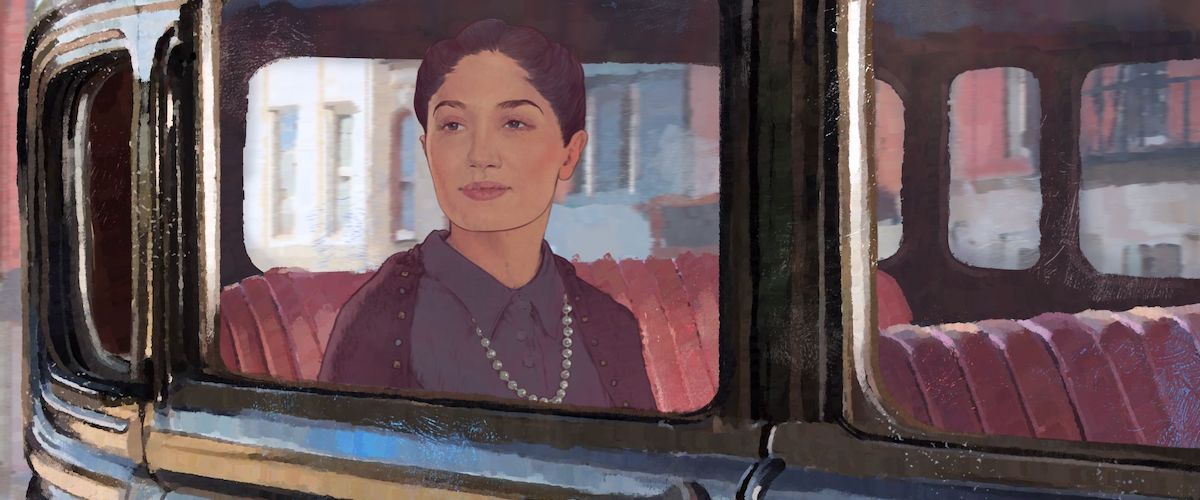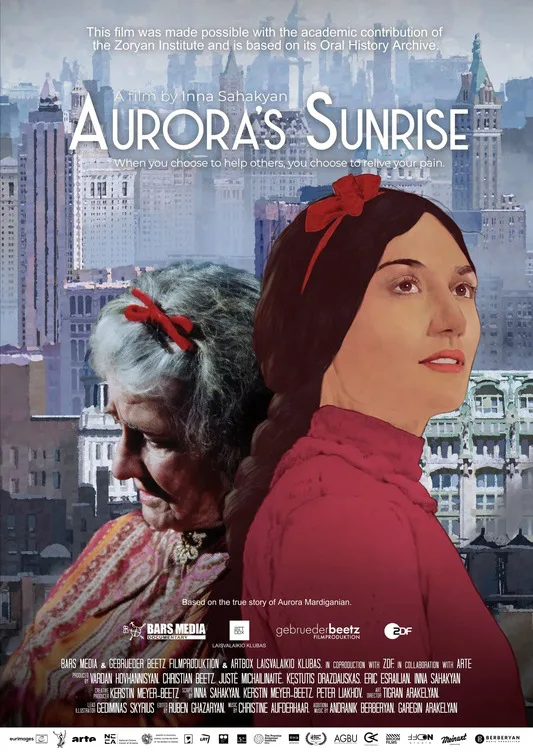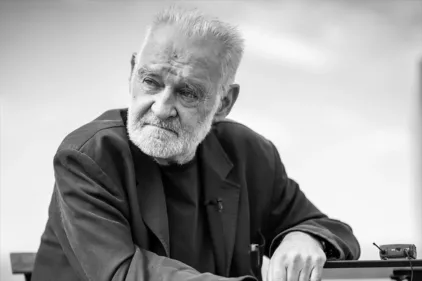My grandfather served valiantly in World War II, landing on the beaches of Normandy, coming home, and never speaking of it again for decades. Near the end of his life, he started to share some stories, often unexpectedly at family gatherings, things he had never told anyone, but one suspects he had thought about for decades. I often wished I could get him to sit down and talk about his life, but I knew it was too painful for him to do so. I thought of that feeling of what’s lost when we don’t record history while watching the excellent “Aurora’s Sunrise,” a film that both chronicles a horrendously dark chapter in the world but also speaks to the value of filmmaking in the first place. It’s a stunning hybrid that melds animation, interview footage with its subject, and a 1919 silent film once thought lost to history that’s about her life. Imagine being able to sit with a loved one and see their harrowing life story unfold both in new animated recreations and actual footage from the era that’s over a century old. Aurora Mardiganian’s story is a moving tale of heroism that Hollywood once thought harrowing enough to make into a truly disturbing feature film. Now it’s been resurrected, over a hundred years later, to be told again. It’s a reminder that film doesn’t just record history, it can transport us through it.
Arshaluys Mardiganian was born in 1901 in a small village in the Ottoman Empire. In 1915, the Ottomans committed genocide against the Armenian people, and Aurora’s family was ripped apart. As thousands of Armenians were murdered, Aurora was part of a death march that nearly killed her multiple times and forced her to bear witness to countless atrocities. Like a lot of young women, she was sold into the slave market, but she escaped, finding her way eventually to St. Petersburg, which promised a route home. Eventually landing on a boat out of Oslo to New York City, she made it to America, and she wrote a book called Ravished Armenia that would be used to draft the film “Auction of Souls,” a project designed to bring attention to the plight of Armenians. Lost for generations, part of the film was found in the ‘90s and restored for release in 2009. Scenes from “Auction of Souls,” starring Mardiganian herself, are cut into “Aurora’s Sunrise,” including a lengthy interview with Aurora from the ‘90s and animated recreations of her story.
“Aurora’s Sunrise” is a historical documentary about the horror of the Armenian genocide, but its power comes from being filtered through the eyes and voice of one of its survivors. It forces one to consider how many stories, horrors, and triumphs have been lost to history because they didn’t have a film like “Auction of Souls” or a confident storyteller like Aurora to tell them. The events in this film unfolded over a century ago, yet it all feels so present in director Inna Sahakyan’s hands because of how much she gives them to Aurora. A narrator tells parts of her story, but we also hear Aurora herself often, intercut with footage of her as a young woman recreating her trauma. The layers of filmmaking—truth on recreation on truth—give the whole thing a fascinating power because it emphasizes the need to not only have people willing to tell these stories but also to listen.
I wished some of the animation was a little sharper, although I suspect the lack of style is intentional. Characters have a habit of floating instead of walking and minimal facial expressions, but a stronger animated look might have really amplified the sense of memory in the overall piece. Christine Aufderhaar’s lovely score helps greatly with the animated segments, giving them an even greater sense of loss without being manipulative.
The interview with Aurora herself is captivating, but I found myself most entranced every time “Sunrise” cut to “Auction of Souls.” Here’s a silent film with hundreds of extras shot in the California desert, depicting abject horrors that took place relatively recently on the other side of the world. It was clearly an act of activism, but it’s also just a breathtakingly daring production that looks like it was truly dangerous to film. And all of it was almost lost forever. In an era when it seems like everything is being recorded all the time, leading to unbelievable access to events happening around the world, “Aurora’s Sunrise” is a reminder that we can’t let it all turn into just white noise, that we need to truly see and hear, or we risk losing the history that has shaped us all.
In limited release now, expanding across the country over the coming weeks.




















